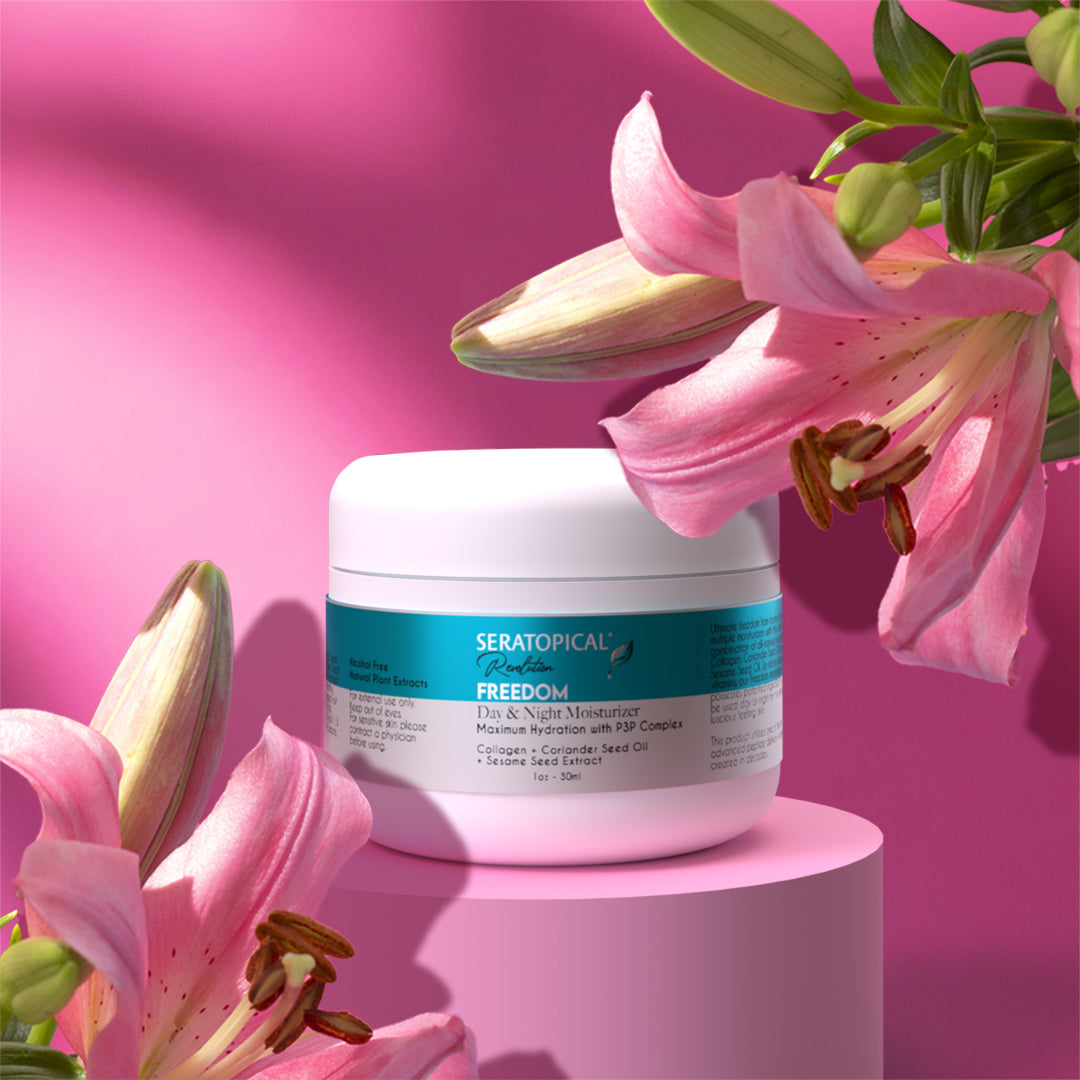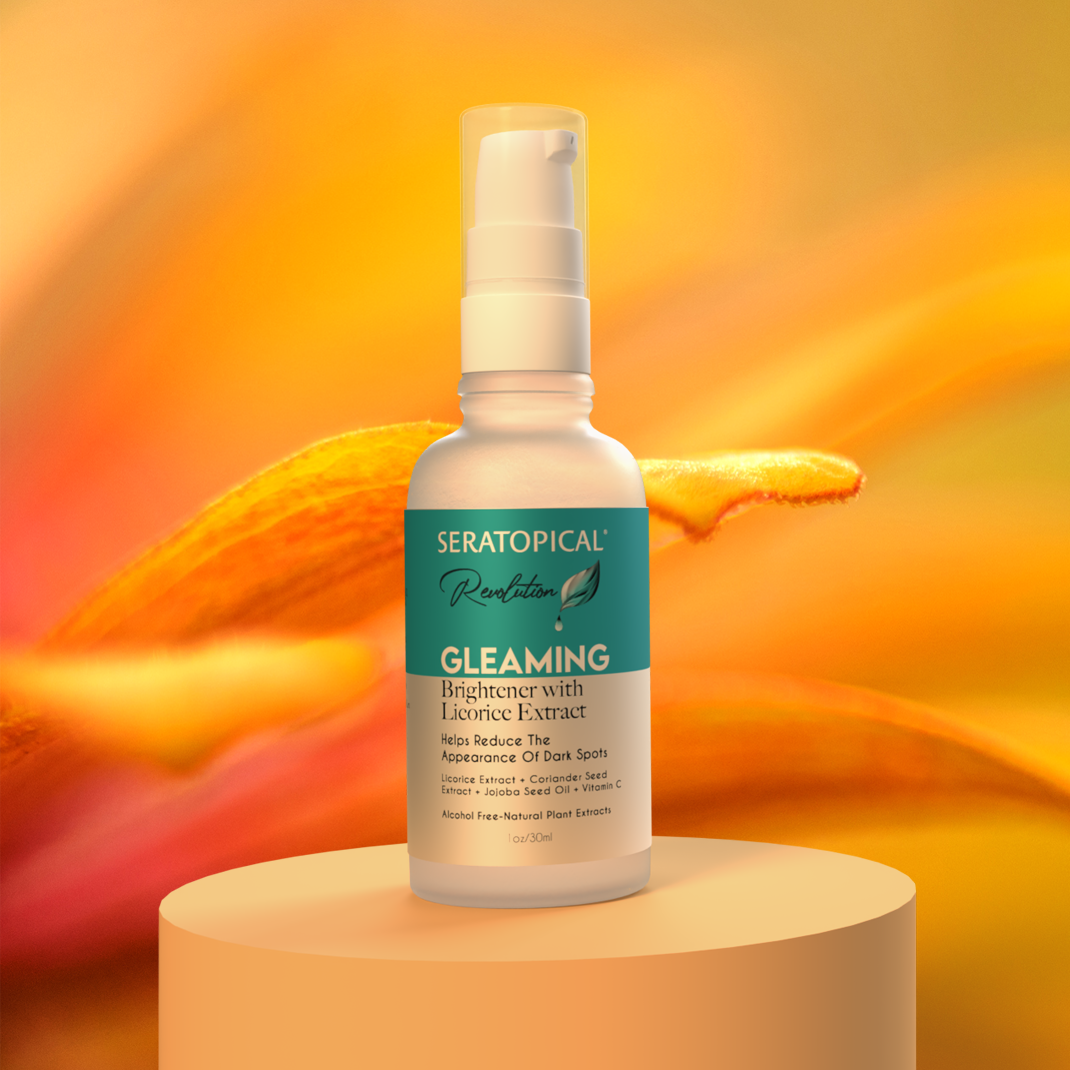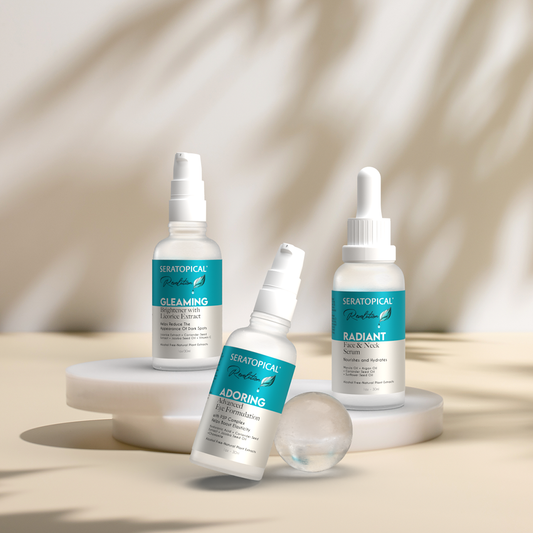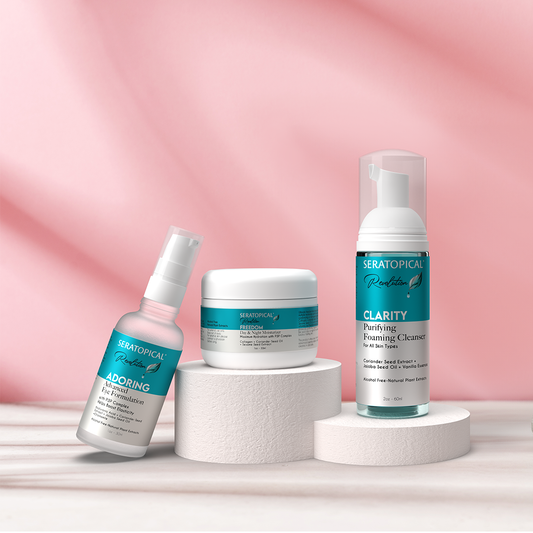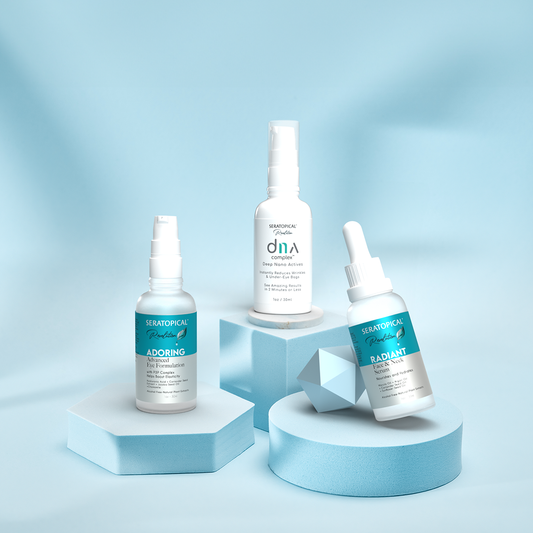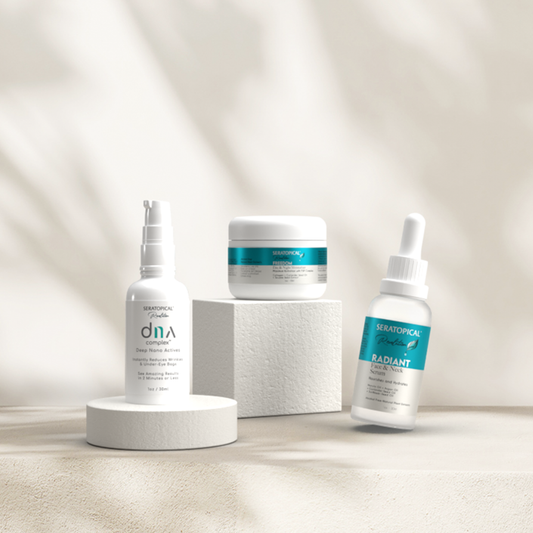You’ve probably heard about hyaluronic acid, a skincare ingredient that is often touted for its impressive hydrating abilities. But knowing exactly how it should fit into your regimen is key for getting the best possible results. Let’s talk about when and how to use hyaluronic acid in your routine, as well as the products you can use with this ingredient for hydrated and radiant skin.
Benefits of Hyaluronic Acid
Hyaluronic acid is a humectant. This means that it works by attracting water molecules to the skin and then trapping them in. In fact, it is able to bind nearly 1000 times its weight in water.
By locking water into the skin, the ingredient dramatically improves the skin’s hydration levels. This leads to a plumper, softer complexion, as well as a healthy skin barrier. By boosting the skin’s suppleness, hyaluronic acid can also help soften the look of fine lines for a more youthful complexion.
This humectant is suitable for all ages and skin types, from oily to sensitive to mature. Every skin type needs proper hydration in order to function optimally – which means that everyone can benefit from using hyaluronic acid in their routine.
When to Use Hyaluronic Acid
Beyond the hyaluronic acid skincare benefits and the fact that this ingredient is suitable for all skin types, what is great about the humectant is that it is gentle on the skin. This means that you can safely use formulas made with this ingredient both morning and night, if desired. Apply a hyaluronic acid serum at the start of the day to promote and maintain plump and soft skin, and then use it in the evening to support your skin’s hydration levels as you sleep.
If you decide to use a hyaluronic acid product in your routine, it is best to use it at least once a day (if not two times per day). This will ensure you’re giving your skin that daily dose of hydration support to maintain a plump, super soft complexion.
Choose the Best Hyaluronic Acid
When working hyaluronic acid into your routine, it is important to choose the right formulas for the optimal results. One of the best ways to give your skin the full benefits of hyaluronic acid is via serums. The best hyaluronic acid serums are made with potent concentrations of this ingredient, giving your skin the full benefits.
Given the effectiveness of the humectant, there are a variety of serums on the market made with this ingredient. This includes hydrating serums that feature hyaluronic acid as the star ingredient. However, you’ll also find other multitasking formulas that combine hyaluronic acid with other high-performance ingredients that address additional skin concerns.
Beyond serums, you can also find this humectant in a range of different skincare products. It’s often one of the star ingredients in moisturizers, but it’s also frequently included in face washes, toners, eye creams, and more.
Note that you can safely layer multiple products made with hyaluronic acid. For example, if you have a serum and a moisturizer that are both formulated with the humectant, they can be used at the same time.
Skincare Products to Use with Hyaluronic Acid
Given its gentle nature, hyaluronic acid works well with virtually all other skincare products. For optimal results (and to effectively achieve all of your skincare goals), pair a hyaluronic acid serum with other products for healthily hydrated and radiant skin.
Hyaluronic acid works best when applied to damp skin, as this gives the humectant water to work with and draw into the skin. With that in mind, once you’ve cleansed your skin, we recommend spritzing your face with a hydrating toner, and then immediately applying a hyaluronic acid serum while your skin is still damp. The refreshing Harmony Toner is made with calming and hydrating ingredients like coconut water and witch hazel, and perfectly pairs with hyaluronic acid.
Since hyaluronic acid is easy to layer with other formulas, we also recommend pairing your hyaluronic acid serum of choice with additional treatments to best address your skin concerns. For example, layer it underneath the nourishing Radiant Glow Face & Neck Serum to improve hydration while helping to soften fine lines and wrinkles, improve elasticity, and strengthen the skin. If you want to brighten your complexion and fade the appearance of dark spots, pair a hyaluronic acid serum with a serum like Gleaming Brightener.
Once you’ve applied your serums, seal in everything with a moisturizer, like the Freedom Day & Night Moisturizer. This will maximize the hydrating benefits of the hyaluronic acid, ensuring it can do its best possible work.
Hyaluronic acid deserves a spot in every person’s routine, regardless of skin type. By using it in your daily regimen, you can achieve and maintain soft, hydrated skin that looks and feels its best.



